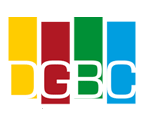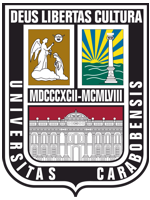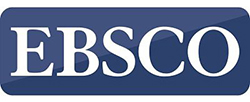Students as a subject of the e-learning environment
DOI:
https://doi.org/10.46502/issn.1856-7576/2021.15.03.8Palabras clave:
electronic learning environment, communication, students, competencies.Resumen
The article is devoted to the subjective role of the student community in the e-learning environment. The basic personal attributes of a modern student required for successful learning in the electronic learning environment were defined, including proactive attitude, motivation, creativity, independence, persistence. The tasks that should be overcome by students to achieve the goal of successful learning were outlined as follows: to take personal responsibility for the process and the final result of learning, to increase their motivation and interest in a positive outcome, to be able to develop communication with other students and the lecturer, to associate the acquired theoretical knowledge with their experience and practical skills. Distant learners were outlined to face a variety of challenges from technical issues and lack of guidance materials to communication difficulties, which are just as important.
The conclusion to be drawn is that the functions and competencies of both students and teachers are changing in the e-learning environment. Communication moves to a different level and starts to be from a peer to peer perspective. The e-learning environment requires students to be more self-organized, goal-oriented, self-conscious in the process of education, to realize the purpose of their cognitive activity, to be inquisitive and passionate.
Citas
Boller, S. (2014). eLearning Trends That Will Fizzle, Sizzle, or Simmer in 2014. TiER1 Performance Indy. URL: http://www.bottomlineperformance.com/elearning-trends-fizzled-elearning-trends-sizzle-2014 (10.10.2021).
Carr, L. (2014). 10 predicted e-Learning trends for 2014/15. Lewiscarr. URL: http://lewiscarr.co.uk/2014/05/10-predicted-e-learning-trends-for-201415 (10.10.2021).
Davis, C. (2014). Top Instructional Design Trends and Outlook for 2014. Elearning Industry. URL: http://elearningindustry.com/top-instructional-design-trends-and-outlook-for-2014 (10.10.2021).
Ferriman, J. (2014). The Future of ELearning in 2014. Learndash. URL: http://www.learndash.com/the-future-of-elearning-in-2014 (10.10.2021).
Kukharenko, V.M., Berezensʹka, S.M., Buhaychuk, K.L., Oliynyk, N.YU., Oliynyk, T.O., Rybalko, O.V., Syrotenko, N.H., & Stolyarevsʹka, A.L. (2016). Theory and practice of blended learning: a monograph. Kharkiv: "Miskdruk", NTU "KhPI", 284 p. URL: http://repository.kpi.kharkov.ua/bitstream/KhPI-Press/23536/3/Kukharenko_Teoriia_ta_praktyka_2016.pdf
Pappas, C. (2015). The Top eLearning Statistics and Facts for 2015 You Need to Know. Elearning Industry. URL: http://elearningindustry.com/elearning-statistics-and-facts-for-2015 (10.10.2021).
Pinkovetskaia, I., Arbeláez-Campillo, D., Rojas-Bahamón, M., Novikov, S., & Veas Iniesta, D. (2020). Social values of entrepreneurship in modern countries. Amazonia Investiga, 9(28), 6-13. https://doi.org/10.34069/AI/2020.28.04.1
Polat, E. (2000). Theory and practice of distance education. Мaterials international conf. “Internet, society, personality. IOL-2000. St. Petersburg.
Rojas-Bahamón, M.J., Aguilar-Cruz, P.J., & Arbeláez-Campillo, D.F. (2020). Curricular integration as a strategy to strengthen the educational process in public institutions in COVID-19 times. Revista Inclusiones, 7 (num Especial), pp. 233-241.
Sysoeva, S. (2011). Interactive technologies of adult learning: a textbook. Kyiv: VD "EKMO". 324 p. URL: https://elibrary.kubg.edu.ua/id/eprint/7101/1/%D0%A1%D0%92%D0%86%D0%A2%
D0%9B%D0%90%D0%9D%D0%90%20%D0%A1%D0%98%D0%A1%D0%9E%D0%84%
D0%92%D0%90%20%20%D0%86%D0%9D%D0%A2%D0%95%D0%A0%D0%90%D0%
A%D0%A2%D0%98%D0%92%D0%9D%D0%86%20%D0%A2%D0%95%D0%A5%D0%
D%D0%9E%D0%9B%D0%9E%D0%93%D0%86%D0%87%20%20%D0%9D%D0%90%
D0%92%D0%A7%D0%90%D0%9D%D0%9D%D0%AF%20%D0%94%D0%9E%D0%A0%
D0%9E%D0%A1%D0%9B%D0%98%D0%A5.pdf
Trilling, B. (2007). Toward learning societies and the global challenges for learning with ICT. Australian Educational Computing, 22(1).
Descargas
Publicado
Cómo citar
Número
Sección
Licencia
Derechos de autor 2021 Nadija Figol , Vasyl Teremko, Iryna Pobidash , Аеlita Lytvyn , Tеtiana Skorohod , Ruslan Trishchuk

Esta obra está bajo una licencia internacional Creative Commons Atribución 4.0.















